Today, we spent a few hours exploring the Museum Judengasse Frankfurt, which is mostly devoted to the old Jewish Quarter of Frankfurt, the Judengasse. The population had mostly moved elsewhere in Frankfurt well before the Nazis came to power, and not much was left after the war. The foundations of several houses in the Quarter were discovered during the building of headquarters for the local public utility and, after much debate and protest, part of the discovery was preserved as the museum.
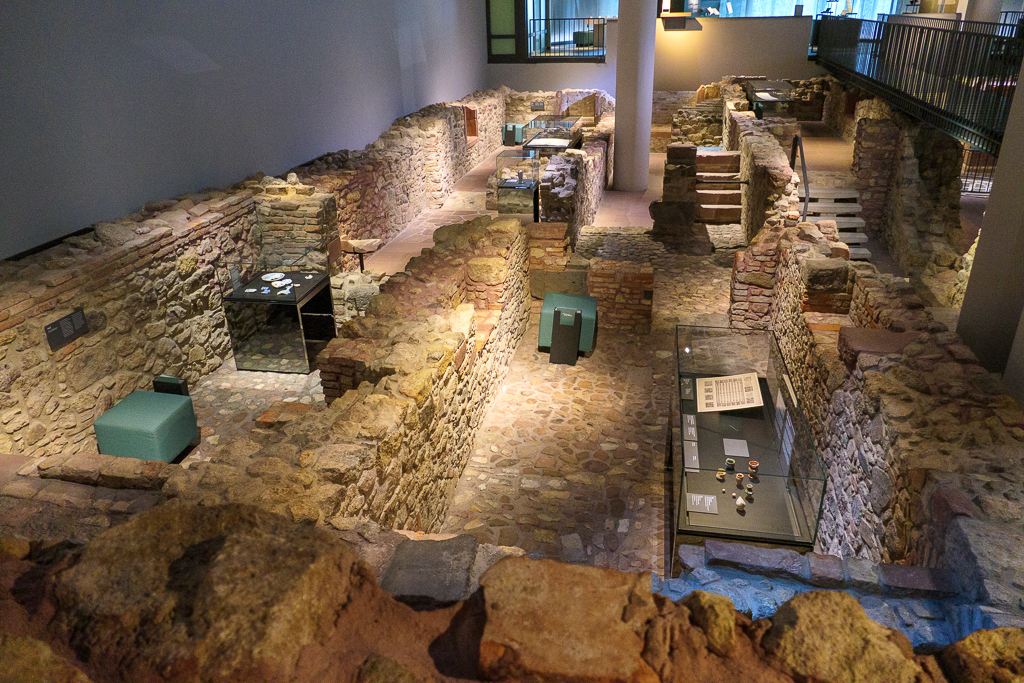
We walked to the museum from our hotel, passing a very interesting mural at the Tailor’s Inn and walking through the grounds of the Peterskirch (Goethe’s father is buried in their cemetery).


I wasn’t surprised to have to go through security to enter the museum; I was a bit surprised at how easy it was to get through. We did have to leave all of our bags and water bottles in lockers, though.
The museum has preserved the foundations of quite a few houses; some were owned by rich people, others housed people of more modest means. They tried to display a variety of artifacts, but they did lean towards the beautiful, like these Hanukkiot (notice that there’s no space for a Shammas candle on the second one – it burned oil, so it didn’t need one!).
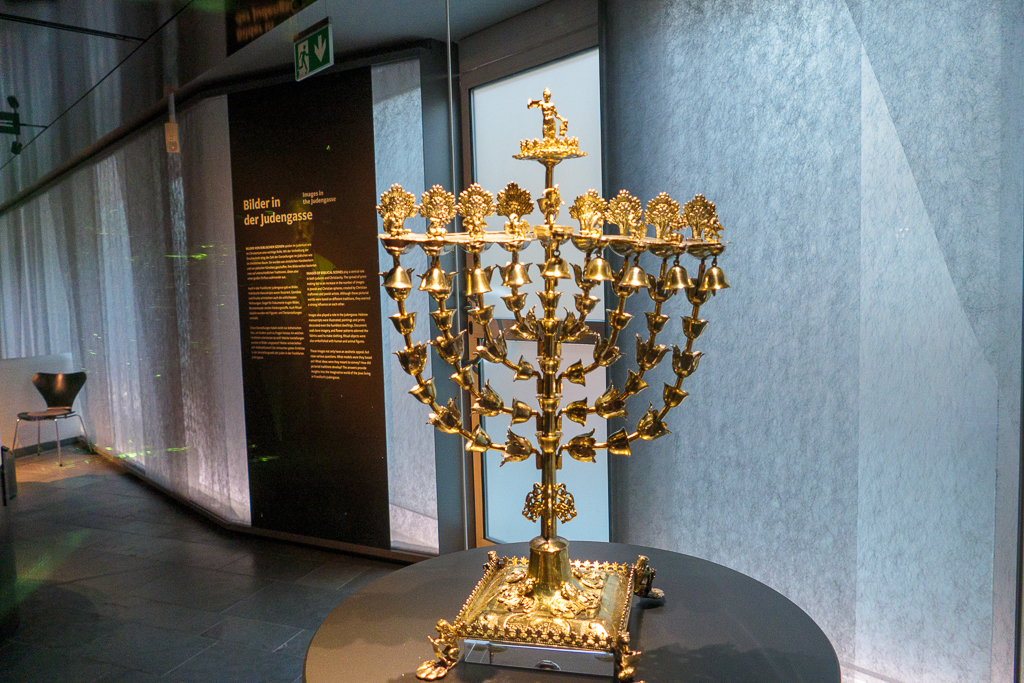

For the most part, the artifacts were arranged thematically rather than by house. There was a lot of commentary in both German and English posted to help provide context – the Havdalah Candle holder and Spice Box were near one another.

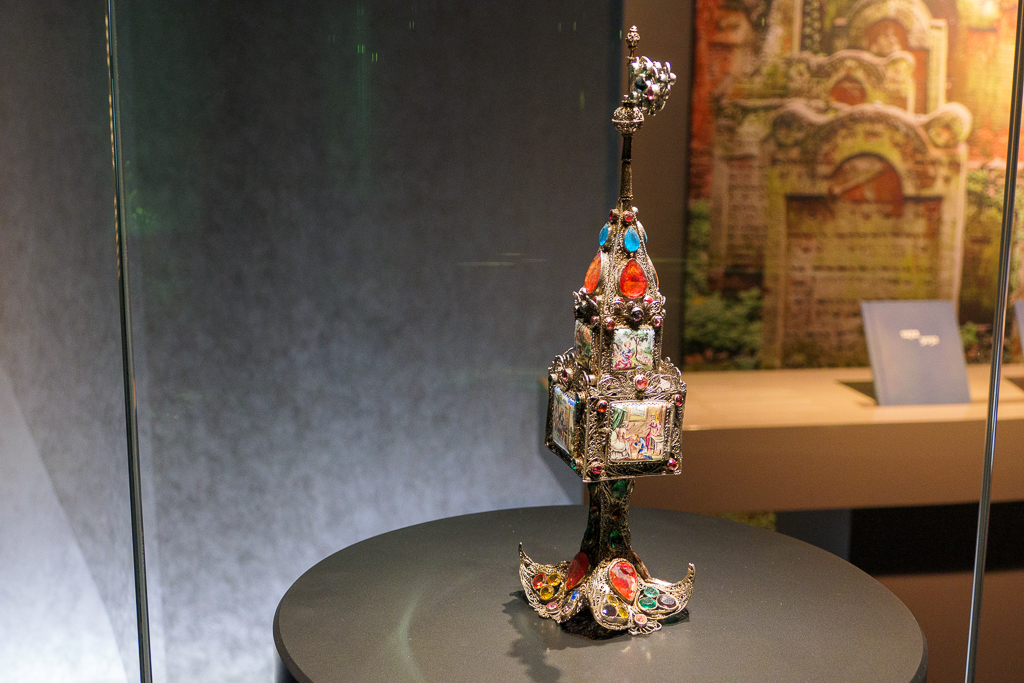
They didn’t have any Torah scrolls (there were some books and other printed pages recovered from a genizah, though), but they did have a Torah breastplate on display.

The entrances to two mikvot had survived; you could walk down the stairs but, of course, there was no water in either one. The first mikveh below was a community mikveh while the other was in a private home.
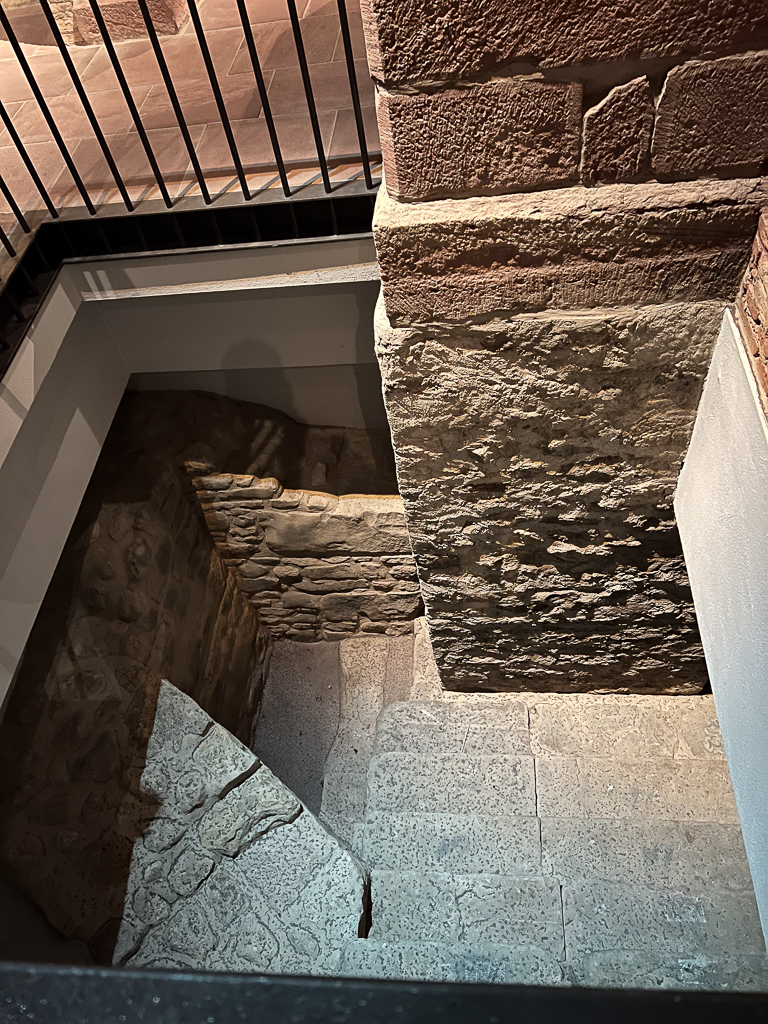

There were exhibits about “Jews and Learning” (lots of books), “Jews and Music” (with recordings), and more. I was fascinated by this matzo cover, made and sold by “the widow Rösel, an old clothes-trader,” using discarded clothing as the material.

The Old Jewish Cemetery is next door to the museum. The cemetery was closed to burials in 1928 because it was full.
The outside wall of the cemetery is a memorial to the deported and executed.
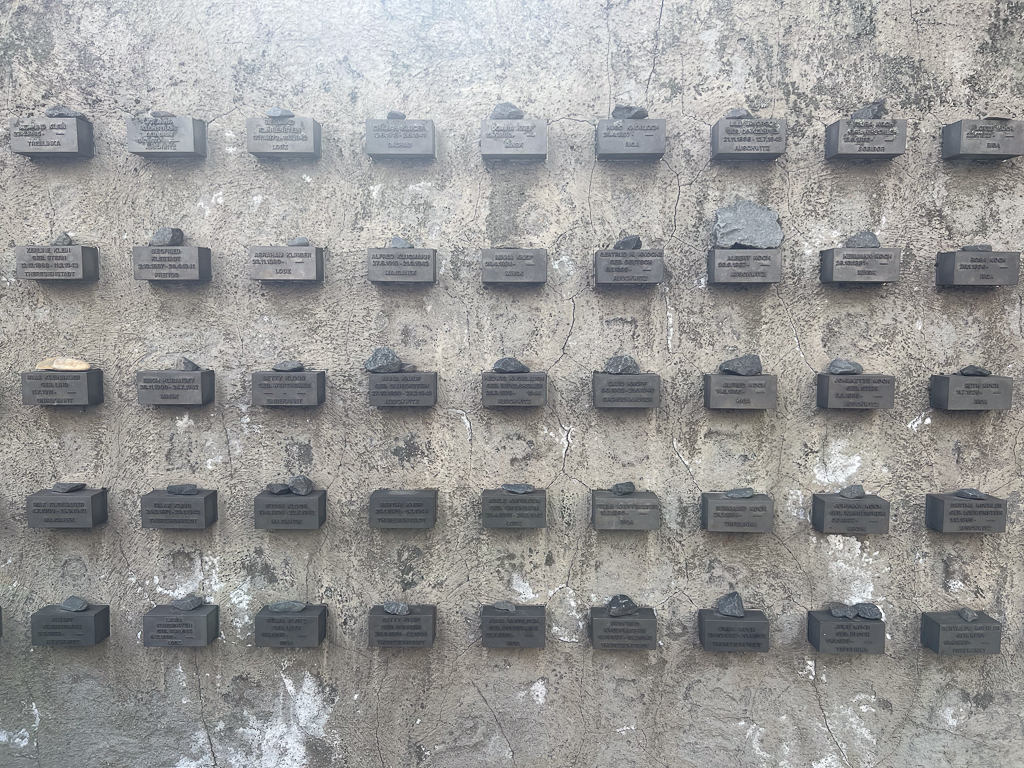
Many of the gravestones in the cemetery were uprooted by the Nazis. Some have been re-installed around the inner walls of the cemetery; others were too severely damaged and were collected for honorable display.

We left the cemetery and headed to our final stop, the headquarters of the European Central Bank.
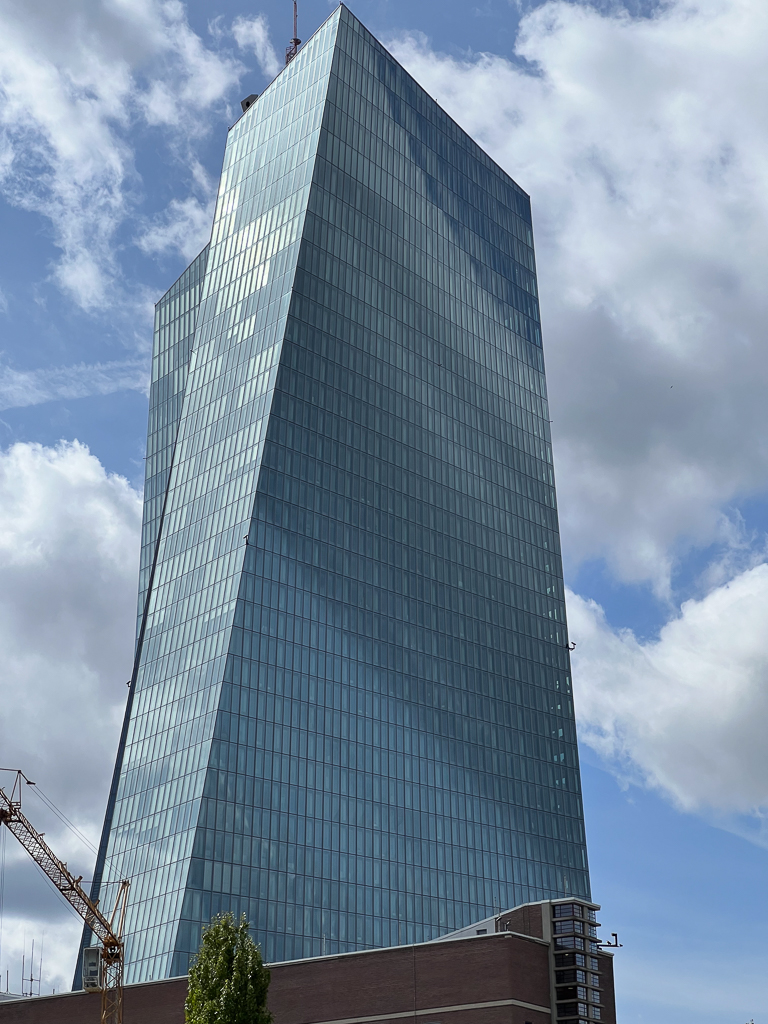
The ECB had been built around the old Grossmarkthalle, the city’s main wholesale market hall. That building had an additional use during WWII – the Nazis used it for the mass deportation of Jews to death camps. The sidewalk outside the ECB is a permanent memorial to those who were deported. There are many inscriptions along the sidewalk from victims, survivors, and witnesses – mostly in German, but a few in English, like this one from a survivor.

There is a plaque with all of the inscriptions, translated from German to English (and vice versa). Reading it was chilling.
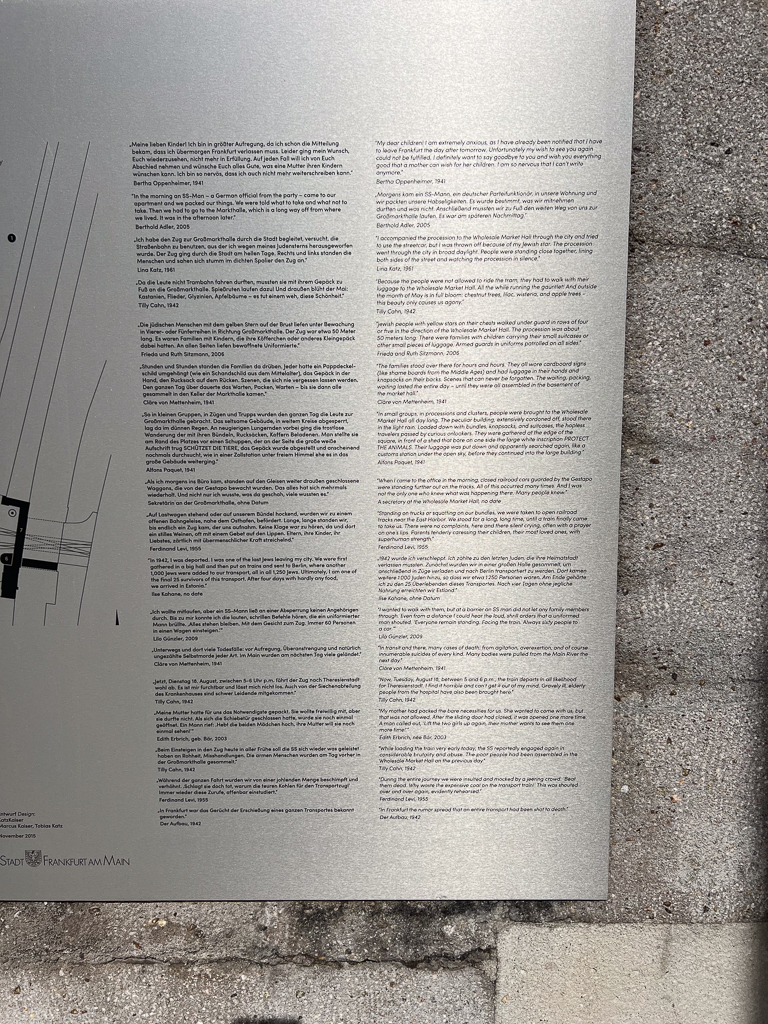
We left the memorial to walk to lunch. You could see how the Grossmarkt had been integrated into the overall design of the ECB, as though it was just another building.

It was an unforgettable day.